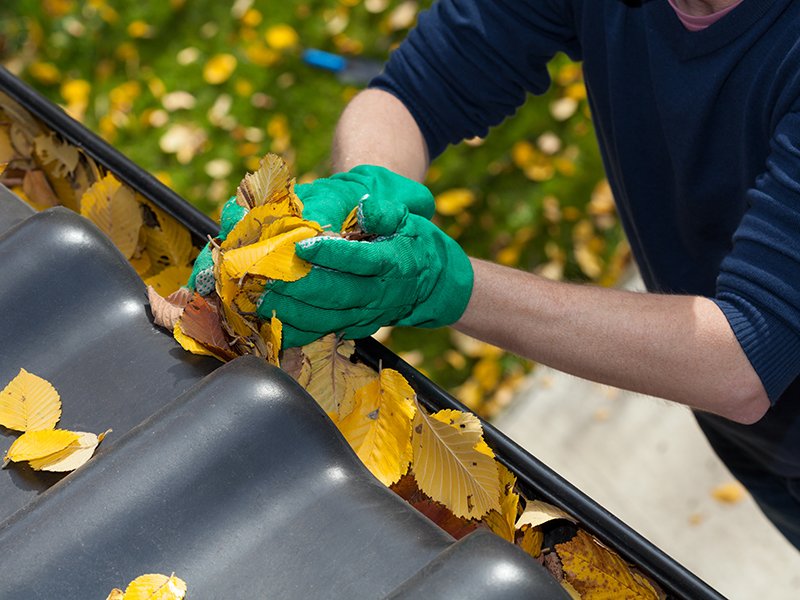
As temperatures begin to drop, make sure to tick these household chores off of your seasonal to-do list:
1. Clean out gutters and downspouts.
While cleaning out the gutters can be an arduous and potentially dangerous task, you’ll be glad you took the time to do it. Clogged gutters can cause major issues for a home including:
• Foundation damage: Spillover water pooling around the base of the house can cause cracks in the foundation or mold growth.
• Landscape damage: If water is pooling at the base of the home, it will also pool in the landscaping surrounding the home causing damage to flower beds and shrubbery.
• Roof damage: In the winter when the gutters are clogged and temperatures drop, all the water turns to ice. Once this happens any remaining water can seep into the home causing damage to the roof and potentially the walls.
2. Seal the windows and door frames.
The last thing any homeowner wants is to pay for heat that is seeping right out of the windows. Sealing windows and doorways can help keep the heat where you want it: inside. The Department of Energy suggests doing the following:
• Add storm windows. They can reduce heat lost through windows by 10 to 20 percent depending on the existing window.
• Caulk for stationary cracks, gaps or joints less than 1/4-inch wide and weather strip for moving components such as doors and windows.
• For the colder weather use a heavy-duty clear plastic sheet on the inside of the windows to reduce drafts.
3. Pack up outdoor furniture and pots.
4. Check your roof.
Look for:
• Buckling, curling or blistering shingles
• Missing or broken shingles
• Cracked or worn rubber around vents
• Patches of moss or lichen growth
5. Change direction of ceiling fans.
During the winter your fan should be rotating clockwise at a low speed. This draws cool air upward and pushes the warmer air down.
6. Check for peeling paint or cracked siding, brick or stone on the exterior.
7. Fix leaky pipes and close off outdoor water faucets.
The last thing you want to deal with in the winter is a burst pipe caused by freezing water. First, check your indoor pipes to make sure there aren’t any leaks that could make a burst pipe more monstrous. Second, remove the outdoor water hose and close off the outdoor valves. The majority of bursting pipes from frozen water happen in pipes that are closest to the exterior of the home.
8. Clean the yard equipment.
The great thing about winter is yardwork takes a hibernation period. But before you pack up the expensive equipment, make sure to give it a good clean with soapy water and a wire brush to get off any remaining clippings and rust spots. For gas-powered equipment, make sure to drain the gas as it deteriorates quickly. Your wallet will thank you come spring when you pull it out of the shed and it is in working order.
9. Get your heating unit and fireplace inspected.
• Every year a professional should inspect your fireplace, says the National Fire Protection Association. That’s because heating equipment is a leading cause of home fire deaths, half of which occur from December through February. And while you have a professional there, you should also get your HVAC checked. The last thing you want is to be sitting in a home that is close to the temperature outside.
10. Clean out the fireplace.
11. Check batteries in smoke and carbon monoxide detectors.
According to the Consumer Product Safety Commission, more than 150 people in the U.S. die every year from accidental non-fire-related CO poisoning. And the National Fire Protection Association reports that 3 in 5 home fire deaths happen in homes without or with nonfunctioning smoke alarms. Be safe and check the batteries in your detectors. You should check these devices monthly and change the batteries at least once a year.
12. Change the filters in your home.




